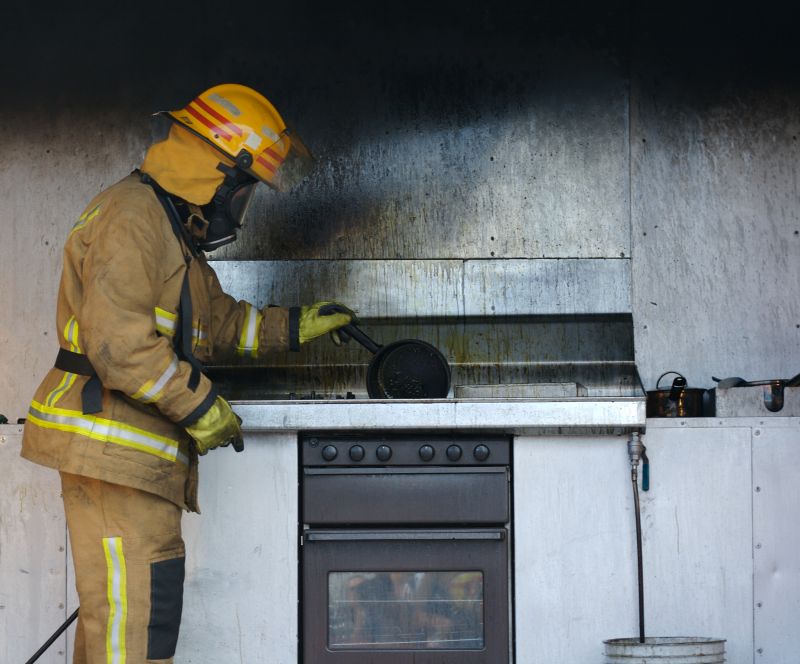Leading Fire Restoration Equipment For Safe And Efficient Recovery
Equip yourself with the most reliable fire restoration tools designed to speed up recovery and ensure safety.
 Fire restoration projects require a comprehensive approach to effectively address the damage caused by fire and smoke. The process often involves multiple stages, including soot and smoke removal, odor neutralization, structural cleaning, and material restoration. Selecting the right products is crucial for achieving thorough cleaning and minimizing long-term damage. From specialized cleaning agents to odor absorbers, a wide range of tools and supplies are available to assist professionals and DIY enthusiasts alike.
Fire restoration projects require a comprehensive approach to effectively address the damage caused by fire and smoke. The process often involves multiple stages, including soot and smoke removal, odor neutralization, structural cleaning, and material restoration. Selecting the right products is crucial for achieving thorough cleaning and minimizing long-term damage. From specialized cleaning agents to odor absorbers, a wide range of tools and supplies are available to assist professionals and DIY enthusiasts alike.
Top Overall Option
Multi-Purpose Fire Damage Cleaning Kit
A versatile cleaning kit designed to address soot, smoke, and odor removal across various surfaces. It includes specialized cleaning agents, odor neutralizers, and protective gear to support comprehensive fire restoration efforts.
Types of Products For Fire Restorations
Soot and Smoke Residue Cleaners
Chemical solutions formulated to break down soot and smoke deposits on walls, ceilings, and surfaces.
Odor Neutralizers and Eliminators
Products designed to absorb or neutralize persistent smoke odors in indoor environments.
Air Purifiers and HEPA Vacuums
Equipment used to remove airborne contaminants and particulate matter from the air.
Protective Gear
Respirators, gloves, and masks to ensure safety during cleaning and restoration work.
Deodorizing Sprays
Sprays applied to fabrics and surfaces to impart a fresh scent and reduce odors.
Structural Cleaning Agents
Heavy-duty cleaners suitable for cleaning walls, floors, and structural elements affected by fire.
Porous Material Cleaners
Specialized solutions for cleaning upholstery, carpets, and curtains impacted by smoke.
Surface Sealants
Sealants used to protect surfaces from future soot and smoke absorption.
Fire Damage Restoration Kits
Comprehensive kits containing a variety of cleaning and deodorizing products for complete restoration.
Electrostatic Sprayers
Devices that evenly distribute disinfectants and deodorants across surfaces and fabrics.
Water-Based Cleaning Agents
Eco-friendly solutions for cleaning soot and smoke residues with minimal harsh chemicals.
Industrial-Grade Cleaners
Heavy-duty solutions for severe fire damage areas requiring intensive cleaning.
Smoke Odor Counteractants
Products specifically formulated to neutralize smoke odors at their source.
Vacuum Bags and Filters
High-efficiency filters for vacuums used during soot removal processes.
Cleaning Cloths and Scrub Brushes
Durable tools designed for manual cleaning of affected surfaces.
Popular Choices
Widely used for removing residues from walls and ceilings post-fire.
Effective for continuous odor neutralization in affected spaces.
Popular for quick air quality improvement during restoration projects.
Commonly used safety equipment for handling soot and chemical cleaners.
Devices that disperse deodorants throughout a space for comprehensive odor removal.
Preferred for manual cleaning of soot-stained surfaces.
Frequently chosen for removing fine soot particles from surfaces and air.
Popular for neutralizing stubborn smoke odors effectively.
Used to lock in residual odors and prevent future absorption.
Chosen for large-scale restoration projects requiring heavy-duty cleaning.
Effective for cleaning upholstery and fabrics impacted by smoke.
Popular for even application of disinfectants and deodorants.
Used in enclosed spaces to absorb and neutralize smoke smells.
Convenient for quick cleanup of soot on various surfaces.
Commonly used to assess indoor air quality during and after restoration.
Proper fire restoration begins with assessing the extent of the damage and choosing appropriate cleaning solutions. Chemical cleaners designed for soot and smoke residues can help break down stubborn deposits on walls, ceilings, and surfaces. Air purification devices and odor neutralizers play a vital role in eliminating lingering smells and improving indoor air quality. For porous materials such as upholstery and carpets, specialized cleaning agents and deodorizing sprays are essential to restore freshness.
In addition to cleaning products, protective gear such as respirators and gloves are important for safety during restoration work. Durable cleaning cloths, scrub brushes, and spray bottles facilitate effective application of cleaning solutions. Equipment like HEPA vacuums and air scrubbers can further aid in removing airborne contaminants and particulate matter, ensuring a safer environment post-restoration. The selection of products should be based on the severity of the damage, the types of surfaces involved, and the specific needs of each project.
Key Buying Considerations
- Assess the severity of fire and smoke damage to determine the appropriate cleaning products.
- Ensure products are compatible with the surfaces being restored to avoid damage.
- Consider the safety features of protective gear, including respirator ratings and comfort.
- Evaluate the effectiveness of odor neutralizers in eliminating persistent smells.
- Look for products that are easy to apply and suitable for both professional and DIY use.
- Check the compatibility of cleaning agents with porous and non-porous surfaces.
- Determine whether equipment such as air scrubbers and vacuums are necessary for your project scope.
- Review product labels for chemical composition, especially if sensitive individuals will be in the space.
- Consider the size and coverage area of cleaning solutions and equipment to match project needs.
- Prioritize products with clear instructions and safety guidelines for optimal results.
- Evaluate the availability of replacement filters and accessories for equipment used.
- Research user reviews and ratings for insights into product performance and reliability.
- Balance cost with the quality and effectiveness of the products selected.
- Consider environmental factors, such as ventilation and space size, when choosing products.
- Verify that products are suitable for the specific materials and surfaces involved in the restoration.
